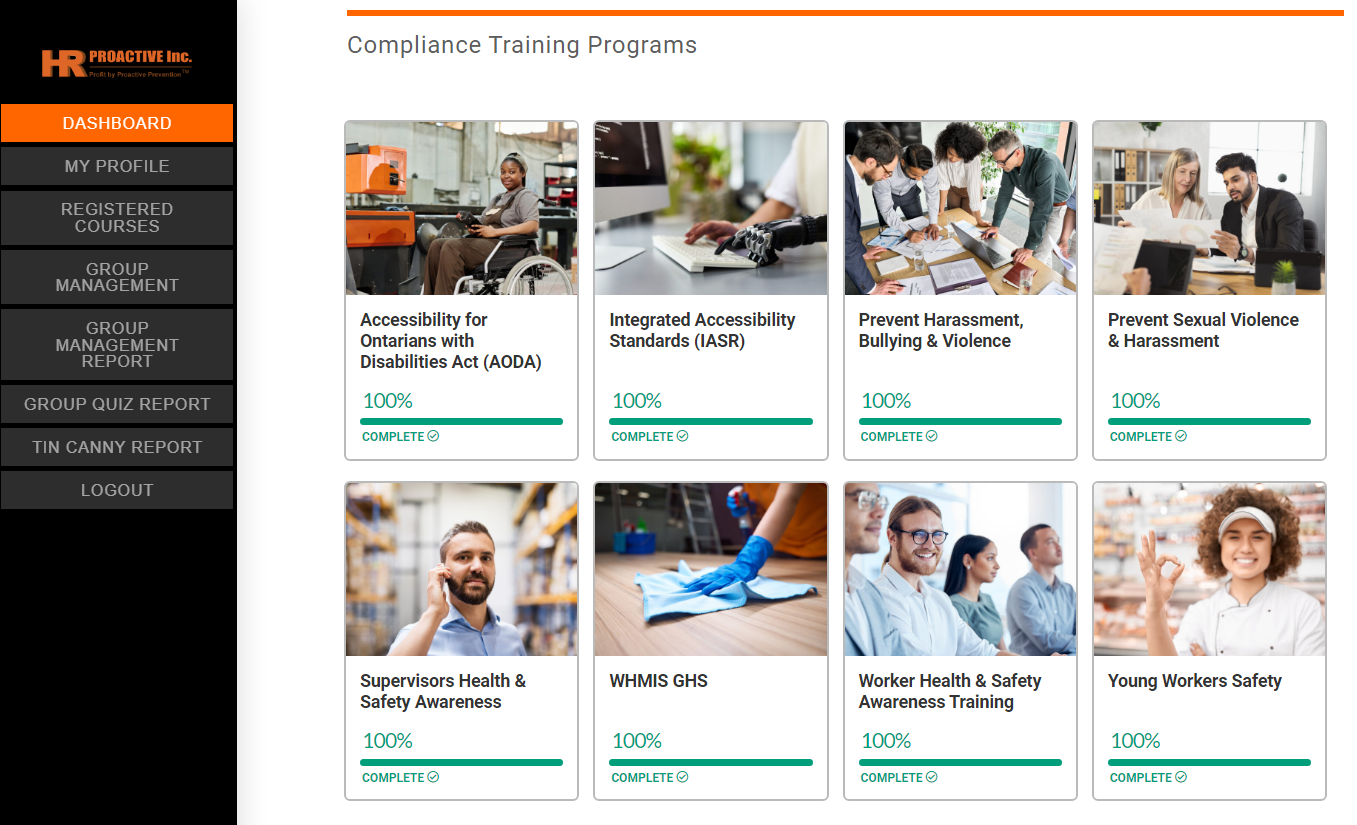Rights & Responsibilities
Under WHMIS legislation, there are a number of rights and responsibilities. HR Proactive’s WHMIS training will provide you with knowledge to help you deal more safely with hazardous materials, and keep your workplace safe from the dangers posed by these materials. This will better ensure your own safety, and the safety of others.
You have the right to:
- Know about any hazards that you and your co-workers could be exposed to in the workplace.
- Refuse work that is unsafe.
- Consult with your workplace’s Joint Health and Safety Committee or Health and Safety Representative.
You have the responsibility to:
- Attend and participate in WHMIS training.
- Handle hazardous materials safely.
- Apply knowledge learned in training sessions.
- Review labels and SDSs prior to use.
- Report damaged, illegible or missing labels or SDSs to your supervisor.
Your employer has the responsibility to:
- Implement the WHMIS program.
- Make available workplace labels and up-to-date SDSs for workers.
- Educate and train on how to interpret and use this information.
- Prepare and maintain a chemical inventory of all hazardous materials in the workplace.
The supplier has the responsibility to:
- Provide information about the product.
- Classify hazardous or WHMIS hazardous products.
- Provide supplier labels and SDSs.
Please contact us to discuss your WHMIS training needs
Please complete the form below and we will get back to you shortly.
Training Your Way!
HR Proactive Inc. offers several options
to train your workers quickly, easily
and cost-effectively.

Hosted LMS
Your own branded Compliance Training Portal

SCORM Package
Upload to your Learning Management System

Streaming Service
Streaming Service Portal with offline options

Custom Training
We will design & deliver content specific to your organization.
HR Proactive Inc. is here to assist you with your company's training needs.
Contact us today. We can help.
